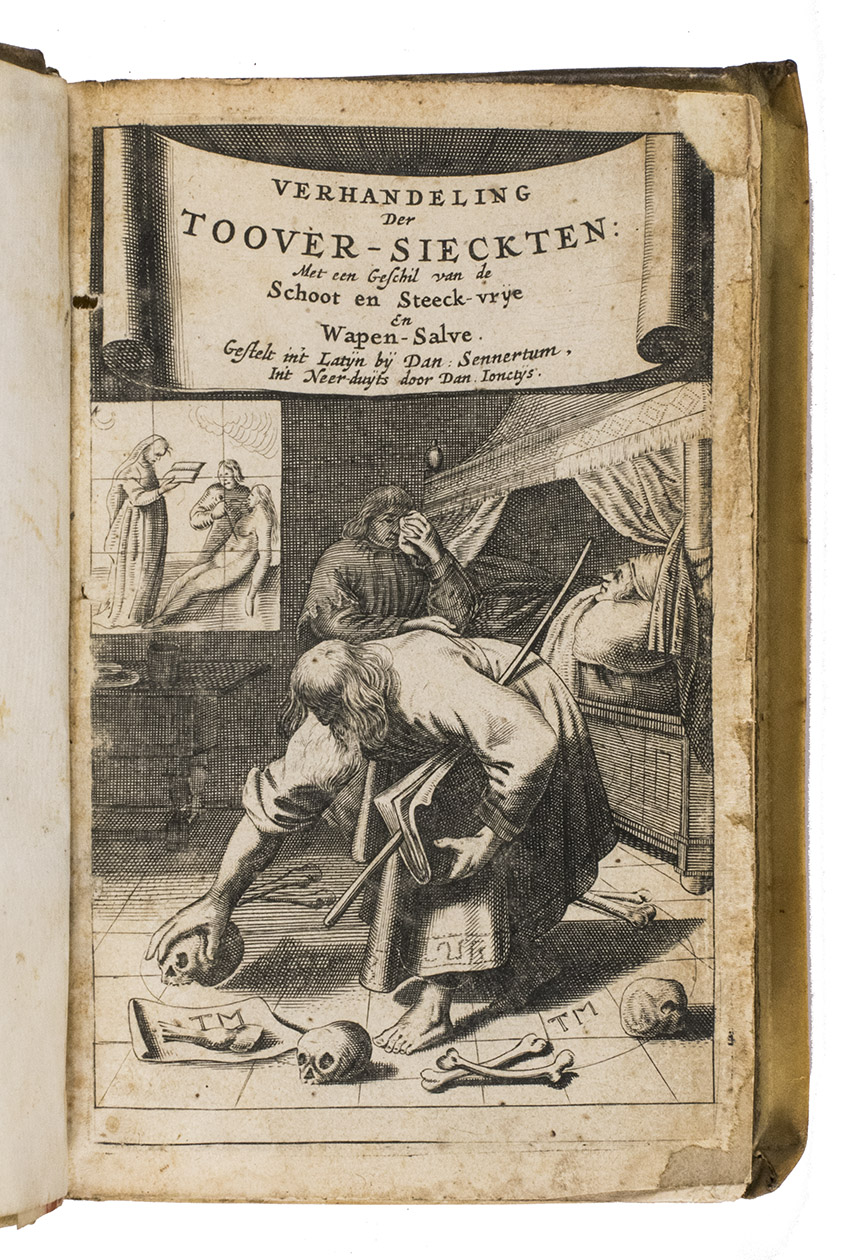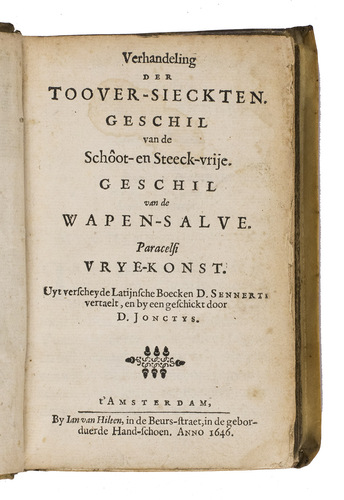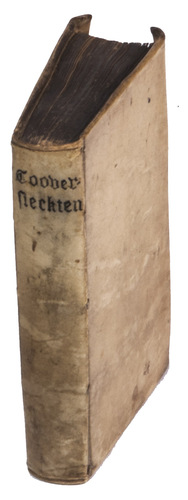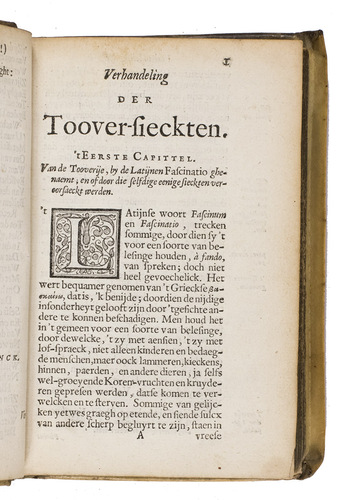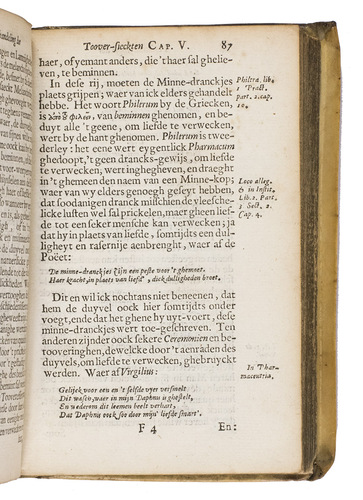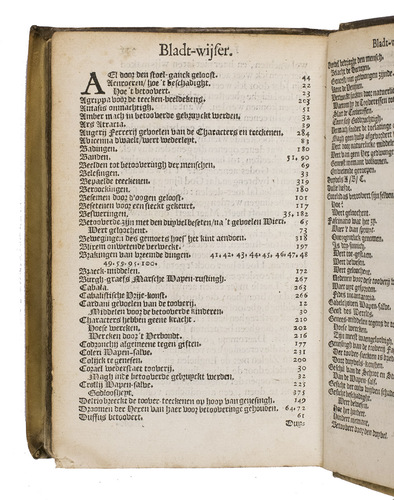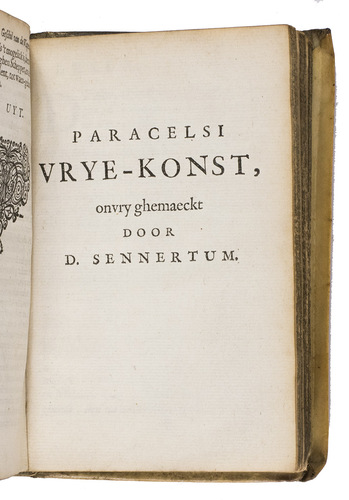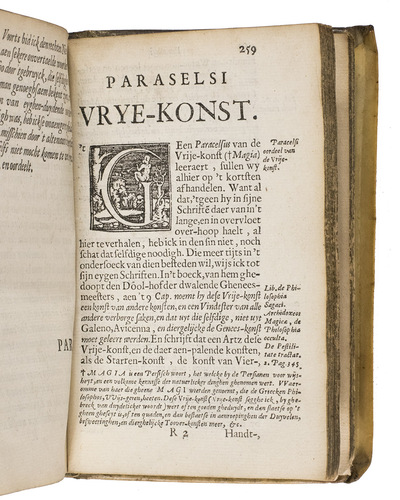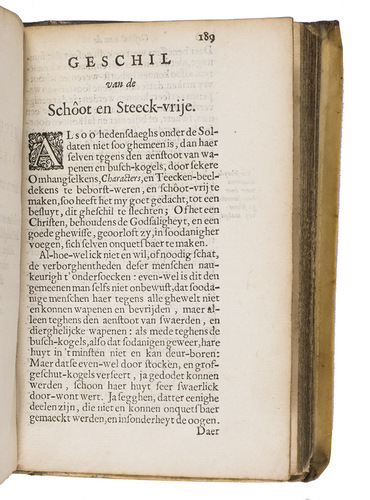SENNERTUS, Daniel and Daniël JONCTYS (translator).
Verhandelingh der toover-sieckten. Geschil van de schôot- en steeck-vrije. Geschil van de wapen-salve. Paracelsi vrye-konst. Uyt verscheyde Latijnsche boecken vertaelt, en by een geschikt door D. Jonctys.
Amsterdam, Jan van Hilten (colophon: printed by Pieter Dircksz. Boeteman), 1646. 4 parts in 1 work. 8vo. With an engraved title-page showing a magician laying magic bones at a person's sickbed, a small vignette on the title-page, 3 typographical divisional title-pages, 1 small woodcut illustration in the text (p. 200), 3 decorated initials (3 different series) and 3 ornamental tail-pieces. Contemporary overlapping vellum. [1], [1 blank], [1], [1 blank], [24], 331, [8], [1 blank] pp.
€ 3,250
Rare Dutch translation of this popular work on sorcery and witchcraft, magic potions, the power of imagination on (imagined) diseases, and more. The first edition was published in 1638 but this edition includes a treatise on invulnerability in war, a magic salve for the treatment of wounds and a refutation of Paracelsus. Another issue appeared in the same year, published in Amsterdam by J.F. Stam. The present work is a selection of theories from the works of Daniel Sennertus (1572-1637), taken from several original Latin editions. Sennertus was one of the leading physicians of his day, respected and honoured all over Europe. He was the first to introduce chemistry at the University of Wittenberg (Germany), where he was professor of medicine from 1602 on. The author of a considerable amount of scientific and medical works, the ideas of Sennertus were never thoroughly treated. In his works a valuable survey is given of scientific and medical literature from the 16th and the early 17th century, although his frequent use of quotes from other writers was reason to accuse him of plagiarism. Sennertus can be considered a sceptical believer in occultism.
Daniel Jonctys (1600-1654), who was the translator of the present work, touches in the preface on the subject of people's naive belief in occultism. He holds Sennertus's work to be a valuable weapon in the battle against harmful superstitious beliefs. But even a sceptic like Sennertus was convinced of the existence of occult qualities, and stated that it was possible for diseases to be caused by witchcraft. Sennertus even described how soldiers could make themselves invulnerable to weapons by carrying occult signs with (or on) them, and how this was supposedly effective.
With manuscript parchment waste used to reinforce the binding at the head and foot of the spine, visible between the paste-downs and the first free flyleaf and leaf Y2 at both ends of the book. With the green and white bookplate of the Buijnsters-Smets collection on the front paste-down. The binding shows slight signs of wear, lacking the final blank flyleaf. The engraved title-page has been reinforced by a thin paper strip mounted on the outer edge of the verso. Occasionally very slightly foxed and slightly browned along the edges. Otherwise in good condition. Krivatsy 10958; Poggendorff II, pp.907-908; STCN 170560392; cf. Caillet 10145 (latin ed.); Scheepers I, 571 (1638 ed.) Waller 1541 (1638 ed).
Related Subjects:
